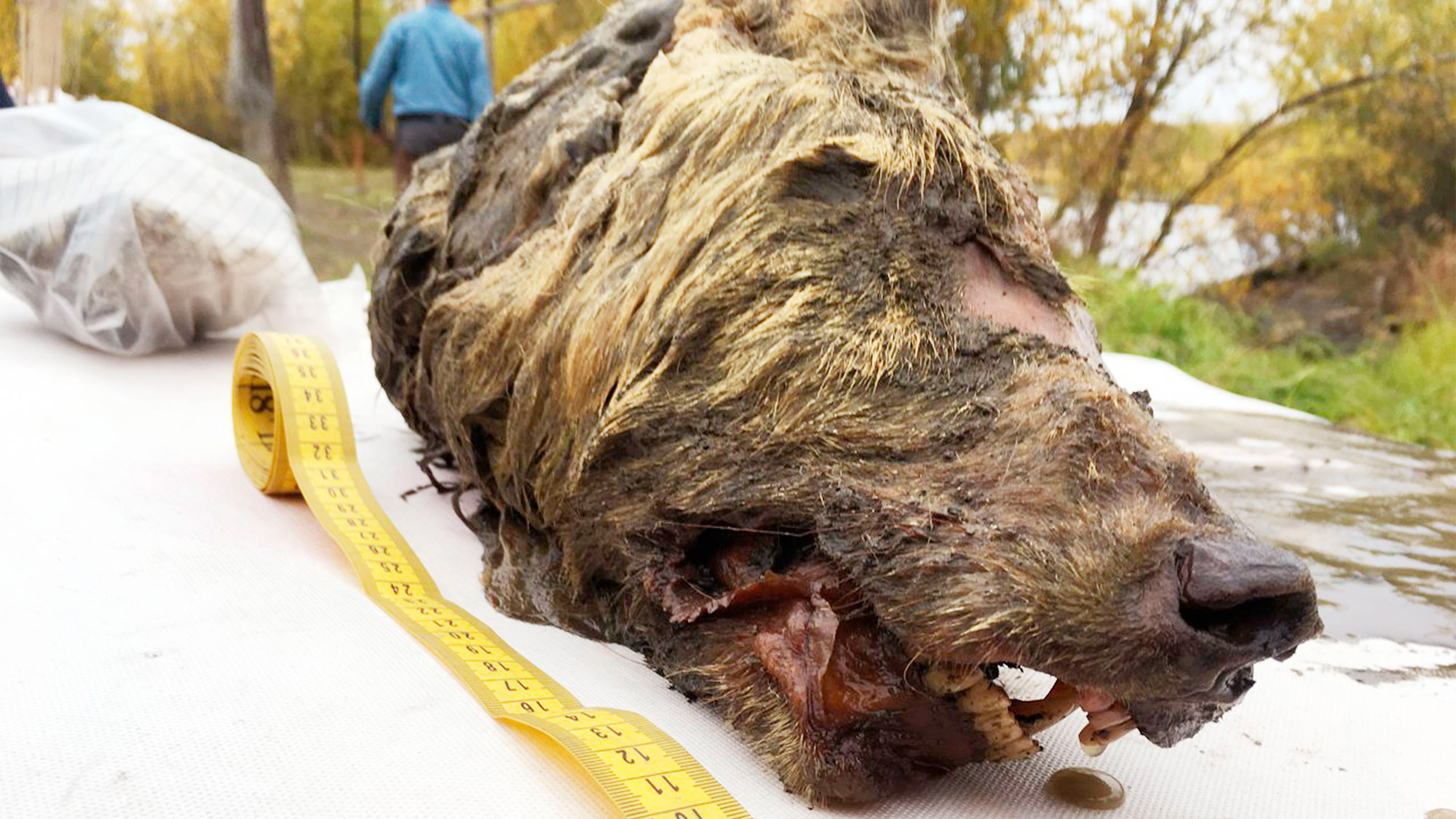Severed Head of a Giant 40,000-Year-Old Wolf Discovered in Russia


Last summer, a Russian man was strolling along the shore of the local Tirekhtyakh River in Yakutia when he came upon a grisly sight: the severed head of an ancient wolf. The head had been well preserved by the permafrost and still sported a full head of hair and sharp fangs.
The man, Pavel Efimov, handed the ancient head over to scientists, who dated it to over 40,000 years ago, or the end of the Pleistocene epoch, according to The Siberian Times. Their analysis also revealed that the wolf was fully grown and was between 2 and 4 years old when it died. [Image Gallery: 25 Amazing Ancient Beasts]
The severed head is 16 inches (40 centimeters) long. That's about half the size of a modern wolf's body, which can range from 26 inches (66 cm) to 34 inches (86 cm) long, according to The Siberian Times.
These are the first remains to be found of a well-preserved, fully grown wolf from the Pleistocene, according to the Times. But people have previously found other remains of ancient wolves, such as a mummified wolf pup that lived over 50,000 years ago in Canada. Back in 2015, scientists analyzed the evolutionary split between dogs and wolves using DNA from a 35,000-year-old wolf rib bone discovered in Siberia, Live Science previously reported.
Now, scientists at the Swedish Museum of Natural History will examine the DNA from the newly discovered wolf head and compare the genetic information to that of modern wolves, The Siberian Times reported. The wolf head went on display in Tokyo as part of an exhibition on woolly mammoths and other frozen creatures.
- Photos: Fearsome Ancient Otter Was As Large As a Wolf
- The 10 Strangest Animal Discoveries
- 10 Extinct Giants That Once Roamed North America
Originally published on Live Science.
Get the world’s most fascinating discoveries delivered straight to your inbox.

Yasemin is a staff writer at Live Science, covering health, neuroscience and biology. Her work has appeared in Scientific American, Science and the San Jose Mercury News. She has a bachelor's degree in biomedical engineering from the University of Connecticut and a graduate certificate in science communication from the University of California, Santa Cruz.


